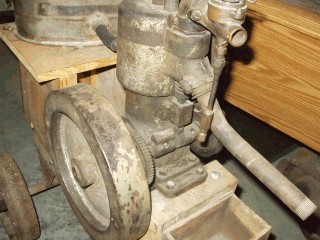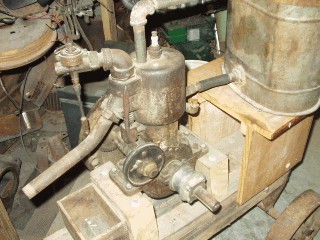|
| Author |
Message |
    
James Thomson
New member
Username: restogreen
Post Number: 2
Registered: 03-2007
| | Posted on Friday, April 13, 2007 - 09:58 pm: | 




|
This engine is 2 castings; cylinder is cast to crankshaft (split design) and has lower crankcase. There are no ports in casting. Flywheel is solid but has gear attached to crank. That gear drives an idler then the camshaft (external) The cylinder has in and out ports for cooling. Not sure how it was supposed to be hooked up, but an old gent used the engine and belted it to a water pump; to water his garden. There was no pump on engine to circulate water in cyl jacket. The water is allowed to cool in a resevoir (thermosiphon). The other side of engine has the timer (point contacts) i guess to operate a battery operated "T" coil .
Appreciate any ideas! 2 photos attached. Thanks!
RESTOGREEN 
My email is : [email protected] |
|
|
|


|


